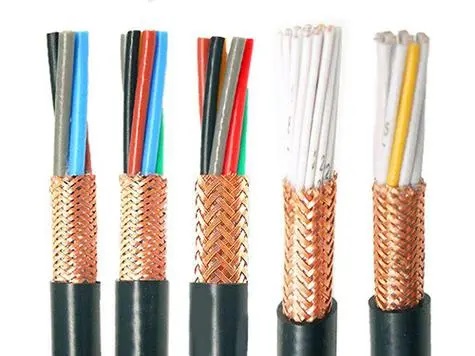The Ultimate Guide to UV Resistant Control Cable Benefits Applications and Best Practices
Introduction UV resistant control cables play a crucial role in various industries and applications where exposure to sunlight and other environmental factors is a concern. These cables are designed to withstand the damaging effects of ultraviolet (UV) radiation, ensuring reliable performance and longevity in outdoor and harsh environments. In this comprehensive guide, we will explore the benefits, applications, and best practices associated with UV resistant control cables. Benefits of UV Resistant Control Cable 1. Enhanced Durability: UV resistant control cables are specifically engineered to resist the harmful effects of UV radiation, which can cause degradation and deterioration of standard cables over time. By using UV resistant materials and coatings, these cables offer superior durability and longevity, even in outdoor and exposed applications. 2. Extended Lifespan: The UV protection provided by UV resistant control cables helps to extend their lifespan, reducing the need for frequent replacements and maintenance. This can result in cost savings and increased operational efficiency for businesses and organizations that rely on these cables for critical operations. 3. Reliable Performance: UV resistant control cables are designed to maintain their electrical and mechanical properties in challenging environmental conditions, ensuring reliable performance when exposed to sunlight, moisture, temperature fluctuations, and other factors. This reliability is essential for applications where downtime can be costly and disruptive. 4. Safety and Compliance: UV resistant control cables are often required in applications where safety and regulatory compliance are paramount. By using cables that are specifically designed to withstand UV exposure, businesses can ensure that their systems meet the necessary safety standards and regulations, reducing the risk of accidents and liabilities. Applications of UV Resistant Control Cable 1. Outdoor Lighting: UV resistant control cables are commonly used in outdoor lighting applications, such as landscape lighting, street lighting, and architectural lighting. https://www.jiangyuancables.com/wp-content/plugins/master-slider/public/assets/css/blank.gif provide reliable power and control signals to lighting fixtures, even when exposed to direct sunlight and other environmental factors. 2. Solar Energy Systems: UV resistant control cables are essential components of solar energy systems, where they are used to connect solar panels, inverters, and other components. These cables must withstand prolonged exposure to sunlight and UV radiation to ensure the efficient and reliable operation of the solar energy system. 3. Agricultural Equipment: UV resistant control cables are used in agricultural equipment and machinery, such as irrigation systems, crop monitoring devices, and automated farming systems. These cables are exposed to outdoor elements and UV radiation, making UV resistance a critical factor in ensuring the longevity and performance of the equipment. 4. Marine and Offshore Applications: UV resistant control cables are ideal for marine and offshore applications, where exposure to saltwater, sunlight, and harsh weather conditions is common. These cables are used in shipboard systems, offshore platforms, and marine equipment, providing reliable power and control in demanding environments. Best Practices for Using UV Resistant Control Cable 1. Selecting the Right Cable Type: When choosing UV resistant control cables for your application, it is essential to consider factors such as cable type, size, insulation material, and voltage rating. Select a cable that is specifically designed for outdoor and UV-exposed environments to ensure optimal performance and longevity. 2. Proper Installation: Proper installation of UV resistant control cables is crucial to their performance and durability. Follow manufacturer guidelines and industry best practices when installing the cables, including proper cable routing, securing, and protection from mechanical damage and environmental factors. 3. Regular Inspection and Maintenance: Periodic inspection and maintenance of UV resistant control cables are essential to identify any signs of damage, wear, or degradation. Inspect the cables for cracks, cuts, abrasions, and other issues that may compromise their UV resistance and overall performance. 4. Environmental Protection: Protect UV resistant control cables from exposure to harsh environmental conditions, such as direct sunlight, moisture, chemicals, and extreme temperatures. Use cable trays, conduits, and protective sleeves to shield the cables from UV radiation and other external factors that may impact their performance. 5. Consult with Experts: When in doubt about the selection, installation, or maintenance of UV resistant control cables, consult with industry experts, engineers, and manufacturers for guidance and advice. They can help you choose the right cables for your specific application and ensure proper installation and maintenance practices. Conclusion UV resistant control cables are essential components in a wide range of applications where exposure to sunlight and other environmental factors is a concern. By choosing UV resistant cables that are specifically designed to withstand UV radiation, businesses and organizations can ensure reliable performance, extended lifespan, and safety compliance in outdoor and harsh environments. By following best practices for selecting, installing, and maintaining UV resistant control cables, businesses can maximize the benefits of these cables and optimize their operational efficiency. 